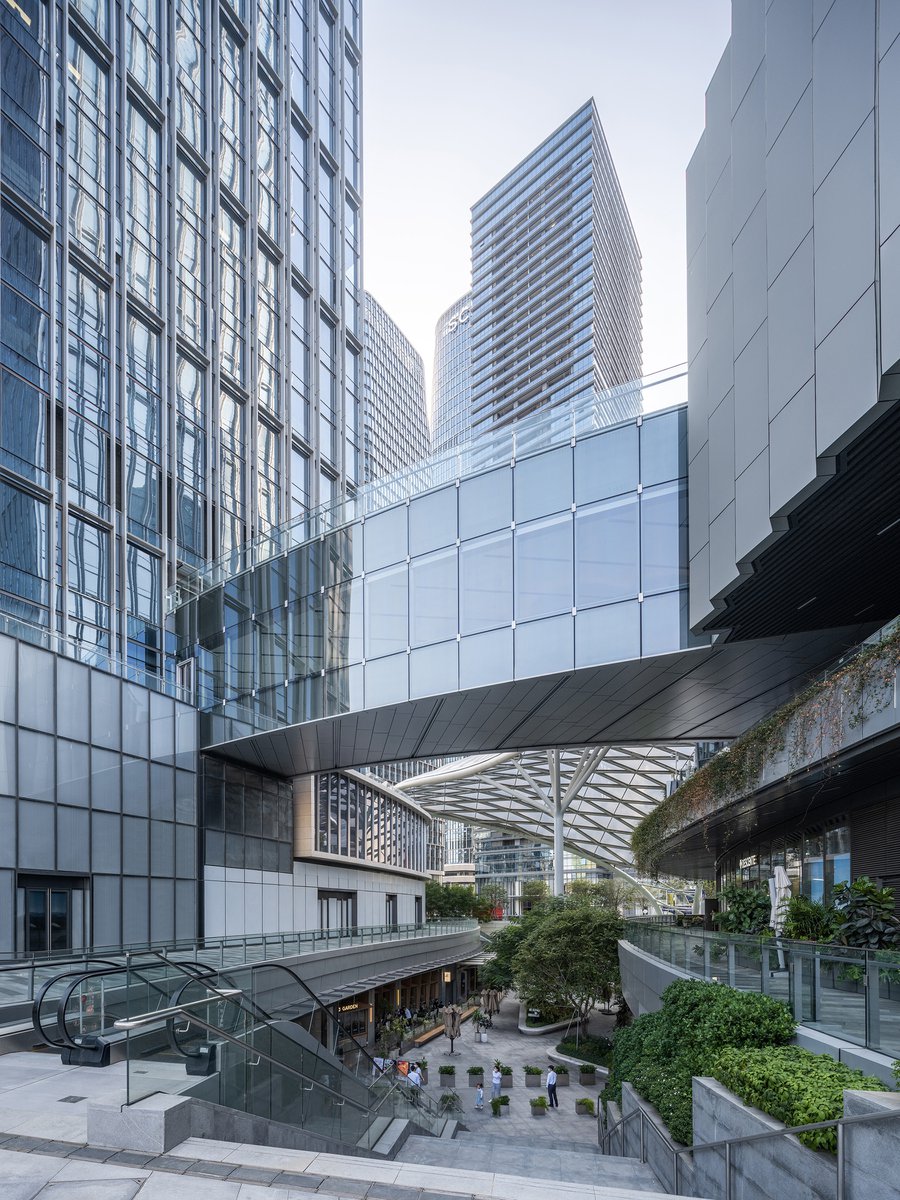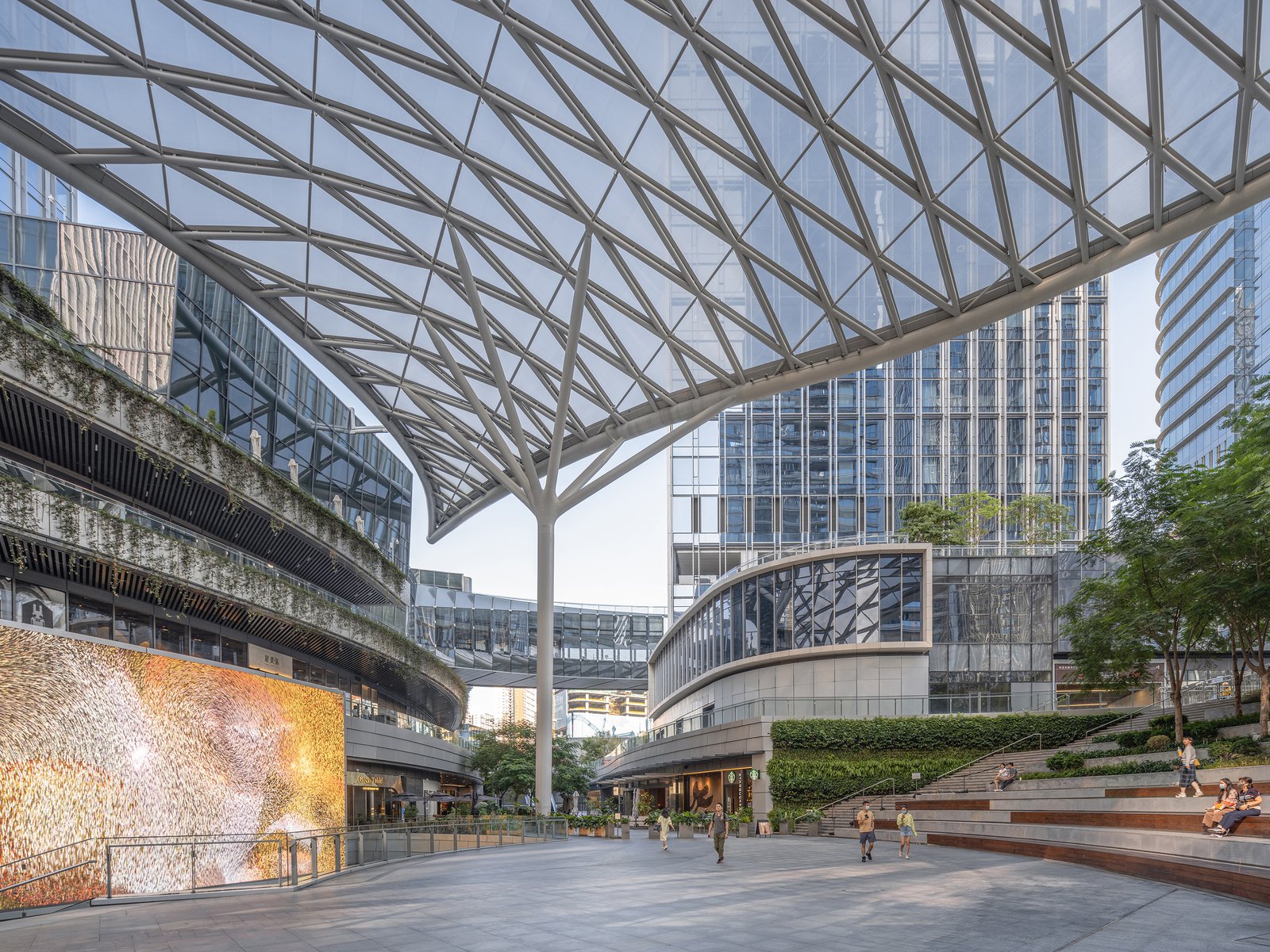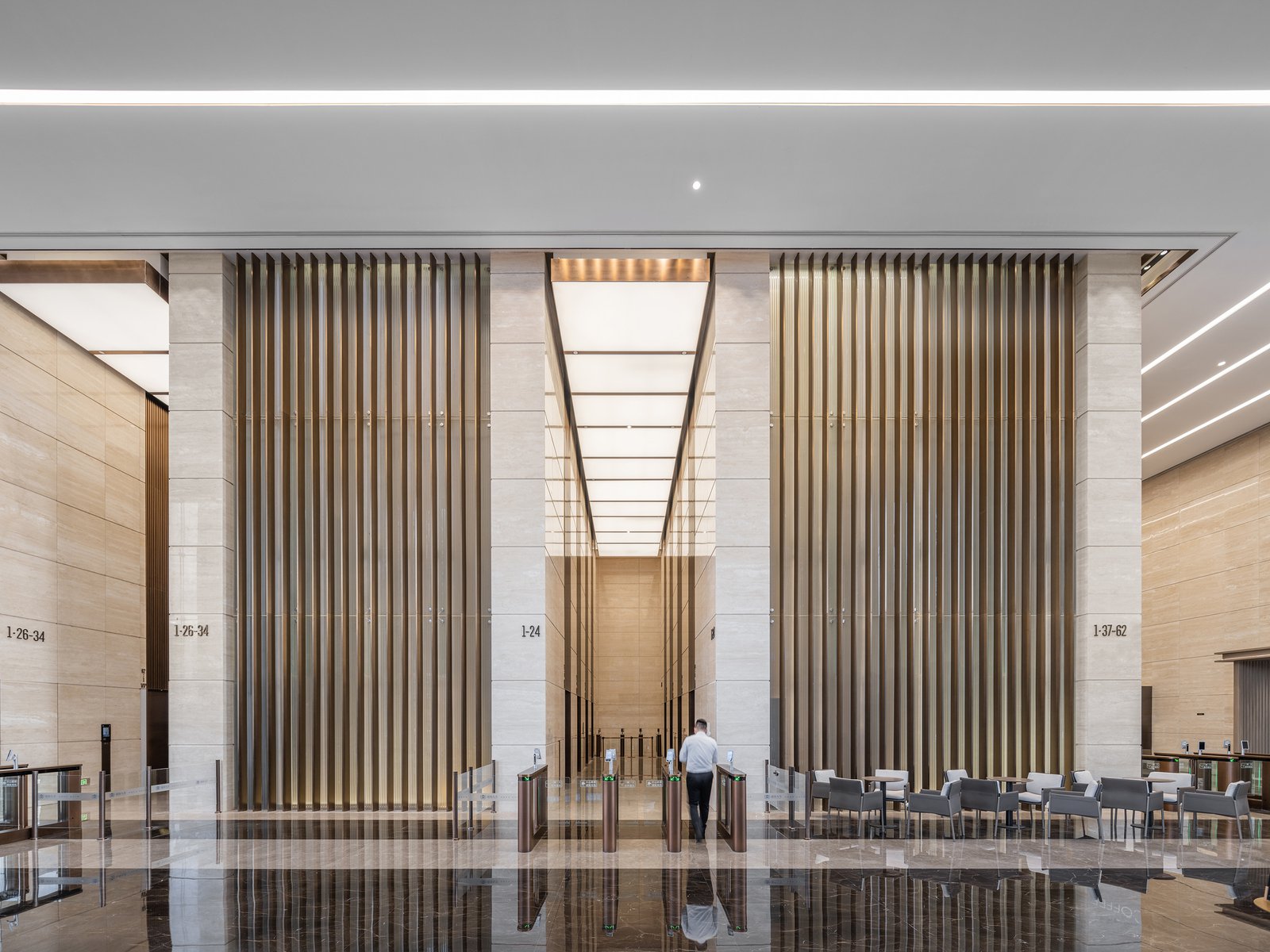China Resources Qianhai Center
Shenzhen, China
The Qianhai district in Shenzhen is a special economic zone designated to transform the previously undeveloped 15-square-kilometer bay area into the “Manhattan of the Pearl River Delta.” Located in Neighborhood 2 of the district, this project covers 6.18 hectares and includes five towers totaling nearly 472,000 square meters. The overall development totals more than 500,000 square meters and includes three office towers, a five-star hotel tower, an apartment tower, and a terraced retail complex. GP designed all of the towers and co-developed the master plan with UK-based design firm Benoy, who also designed the retail complex.
In an effort to prioritize a vibrant pedestrian community at the heart of the complex, the original eight-parcel site was combined into two larger blocks, which unified the development and minimized vehicular traffic within the site. The five towers are arranged around the perimeter of the site in order to create an urban street wall while opening the middle of the site for greater pedestrian movement. In this way, the “financial canyon” was conceived as a multilevel terracing pedestrian zone, meandering through the heart of the development.
As the complex was one of the first developments within the district, it was important that the project include a diverse mix of functions and scale to promote a dense, active, 24-hour live-work-play environment that would attract a critical mass of people to the neighborhood. Equally important was the need to project a character of reserved elegance, quality and permanence that would attract international Fortune 500 finance companies.
Responding to these goals, the office towers are designed as extruded volumes that project an image of stability and confidence. With a classic assemblage of base, middle and top, the towers are articulated with a curtain wall that reinforces the stoic character of the buildings through the multistory grid of exterior double-fin sunshades. The grid provides a scale with classic proportions while providing protection from the tropical weather. Additionally, the double fins allow the buildings’ parallel-projection windows to open and close within the shadows of the fins, reducing visual disruption and allowing the towers to maintain a cohesive character.
The ”financial canyon” podium, which connects all towers, was designed to promote a livable and healthy environment. Terraced levels reduce the scale of the urban streetscape and provide multiple options for social interaction. Lush landscape enhances the character of the tropical public realm while also supporting the “sponge city” requirements of Shenzhen—an effort to absorb rain and prevent flooding.










